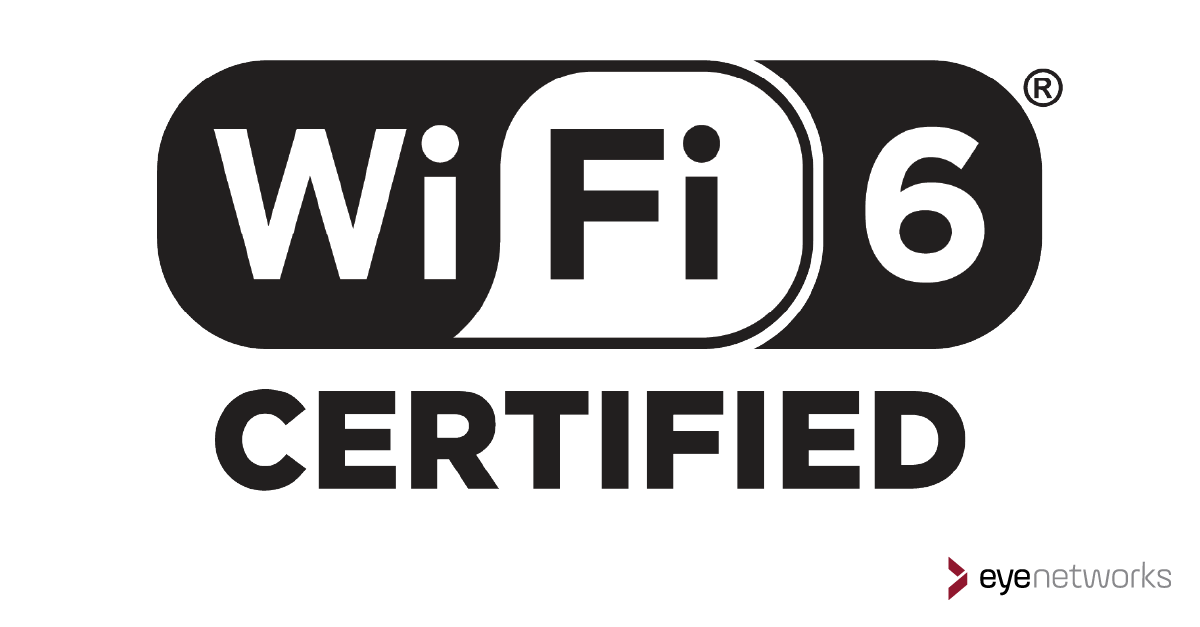What problems can a Wi-Fi 6 network encounter when other products do not follow the same standard, and how do you solve these problems?
What Is a Wi-Fi 6 Network and How Do You Get One?
Wi-Fi 6 is an industry certification for products that support the wireless standard 802.11ax.

Wi-Fi 6 is often referred to as “high-efficiency wireless”, boasting increased capacities, improved resource utilization and higher throughput speeds. You can read more about what the standard entails here: Wi-Fi 6: What can we expect from 802.11ax and the term Wi-Fi 6 here: Wi-Fi 7, 6, 5 … Generations of wifi and what they mean.
The very first Wi-Fi 6 products hit the market around the turn of 2018/2019, and all high-end products, such as smartphones, now support Wi-Fi 6, but this only becomes relevant when you also have a network that supports it. Only if you use a router or mesh network that supports Wi-Fi 6 will you get credit for Wi-Fi 6 in other gadgets.
If your wireless network does not support Wi-Fi 6 (802.11ax), then Wi-Fi 6 in a client will not have any effect on the performance and functionality the client gets on the network.
We at Eye Networks sell a range of gateways/routers and mesh access points that support Wi-Fi 6:
- All new MPro Mesh products from Zyxel – ( read more about MPro Mesh )
- eero 6 and eero Pro 6
The reports and results we have seen from the rollout of Wi-Fi 6 have, among other things, shown increased performance in the form of better throughput both on Wi-Fi 6 clients and some Wi-Fi 5 clients on Wi-Fi 6 network.
As usual with new technology, we have also seen some compatibility issues. These are challenges that everyone who installs access points with Wi-Fi 6 will be able to face, and we deal with these in this article.
What Is Compatibility?
“Compatible” basically means “works with”. Wi-Fi 6 is designed to be backwards compatible with previous standards. That means that the vast majority of Wi-Fi products you have in your home probably work with Wi-Fi 6, even if almost none of them support 802.11ax .
When we say that a client has compatibility issues, it means that it does not work normally (or at all) on a Wi-Fi 6 network.
802.11ac , also known as Wi-Fi 5, was the latest and greatest standard on the market before Wi-Fi 6 arrived, and there are still products on sale that follow this standard, both routers, amplifiers, mesh networks and, not least, various wifi clients. These clients will essentially be compatible with a Wi-Fi 6 network, without even supporting the very latest standard.
What Clients May Cause Problems?
A client is any device that can connect to a Wi-Fi network. This tends to bring smartphones, computers, and tablets to mind. We know of specific problems with some older products in this category, and you can read more about these issues below.
It is however worth keeping in mind that electronics such as panel heaters, bathroom scales, and smoke detectors can also be Wi-Fi clients. And while we have not recorded any specific cases yet, it might be useful to be aware that based on experience, this type of electronics is never early to adopt or support the latest Wi-Fi technology (for a related example, see our article How to connect Mill ovens to mesh wifi).
PCs That Use Intel Wireless Adapters
Several Intel wifi adapters have known Wi-Fi 6 issues. These problems are mostly resolved with a driver update, but it’s important to know that those updates are not part of any Windows updates, so they will need to be updated manually.
Intel also has a dedicated application called Intel® Driver & Support Assistant, which keeps Windows up to date with the latest driver versions for their products. You can find an overview of adapters and recommended driver versions in this knowledge base article from Intel.
As an additional note: If a pc has the Wi-Fi card Intel® Dual Band Wireless-AC 8265 from 2016, this can cause major problems for Wi-Fi networks regardless of wireless standard, because the pc floods the wireless network when it comes out of hibernation. However, this issue can also be resolved with a driver update. You can read more about this specific issue in Renzo Notter’s blog here: Wi-Fi DoS by RF-Jamming from faulty Intel Driver. There are, in other words, several good reasons to make sure that drivers are up to date.
Not sure what wireless adapter you have? Open Device Manager in Windows, locate “Network Adapters” and click to view the full list. Your Wi-Fi adapter should be listed here.
If you are an internet provider and want to prevent users with Intel adapters from having problems, an alternative could be to temporarily switch off support for Wi-Fi 6 on the customers’ 2.4 GHz network.
Products That Do Not Support WPA3 “Mixed Mode”
WPA3 is the latest standard for Wi-Fi encryption. This is separate from Wi-Fi 6 / 802.11ax, but in practice the same products will often be early in supporting both.
If some products have problems connecting to the Wi-Fi 6 network, the problem may be lack of support for WPA3 or the “WPA3/WPA2 mixed mode” function. Mixed mode is intended to ensure that older clients can still connect, but in practice there are some clients who do not recognize this setting and refuse to connect at all.
Such problems are likely to apply to a number of older products, but reports we have received so far suggest that it applies at least to the following:
- Older Apple products, such as iPad 4 (from 2012) and other products using iOS version 12 or earlier
- Older Microsoft Surface models
As WP3 is much safer than WPA2, we do not recommend downgrading the security of WPA2 to let older clients connect.
Is That It?
Certainly not. Our customers are network providers who, like us, have extensive experience with rolling out new technology in home networks — networks that have to deal with unique mixtures of new and old technology, challenges with building materials, floor plans, various degrees of noise from neighbors and more. An overview of how Wi-Fi 6 performs in the face of this reality will therefore never be fully exhaustive or complete, but this article contains all the serious compatibility issues we are aware of as of today.
